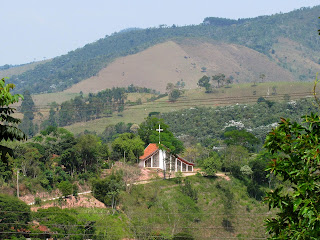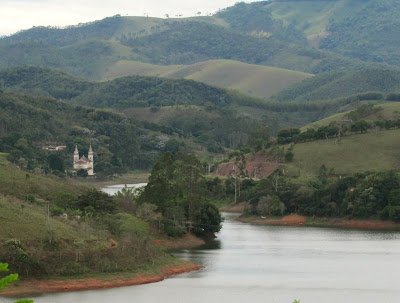 Only in the north-east of
Only in the north-east of
The
clouds from the ocean bump into the mountains and provide the water to sustain
the rain forest (the Mata Atlântica) on the coast.
 So when you want to go to the sea you have to cross the
serra. From Taubaté it is 90 kilometers by bus across the Serra do Mar.
So when you want to go to the sea you have to cross the
serra. From Taubaté it is 90 kilometers by bus across the Serra do Mar.
The landscape on the land side of the serra reminds me of England
After three quarters of the trip you reach a pass on around
1000 meters. Once you passed that pass the road goes down. I tried to count the
very steep curves. There are at least 25 of them. The bus slows down to first
gear and needs the left lane to round the curves.
Here in Brazil
At the end of the curves the first house you see has an “SOS
breaks service” sign…. and sells
bananas.
Finally we arrive in Ubatuba. Ubatuba is an Indian name and it means
“many canoes”. Ubatuba has some fine old Portuguese houses.
But there is
something far more interesting here. The Tropic of Capricorn reaches the
continent of Latin America in Ubatuba. You
have to search for the small sign in the grass behind a seat. But there it is!





































